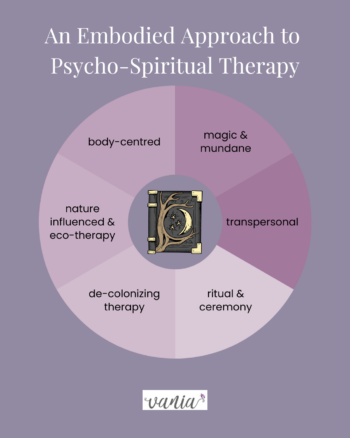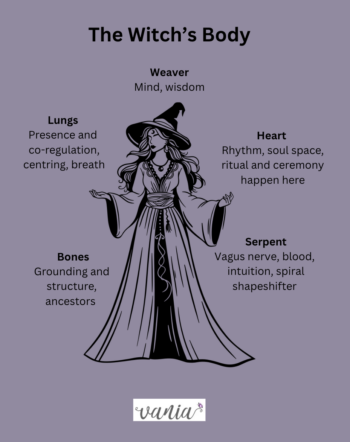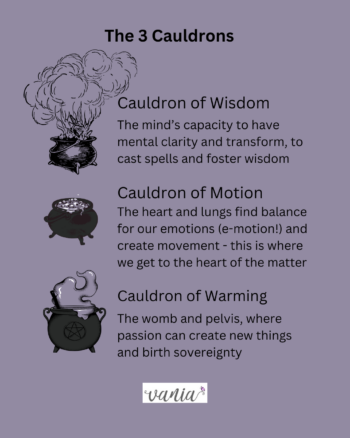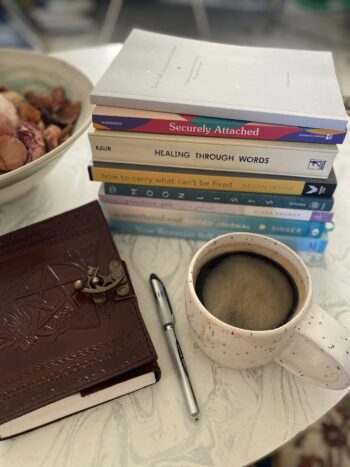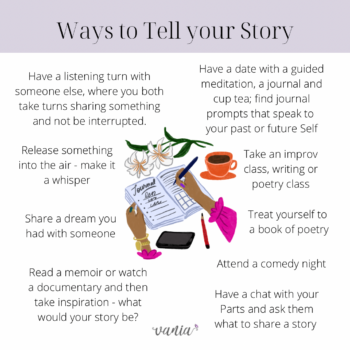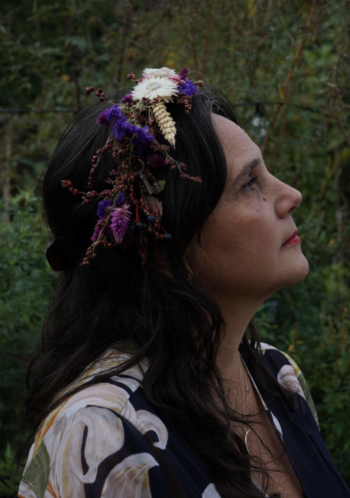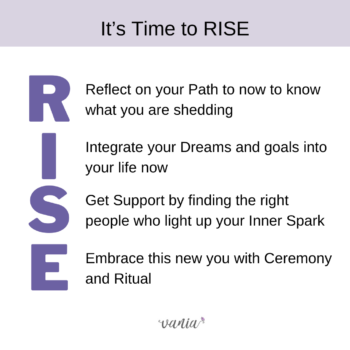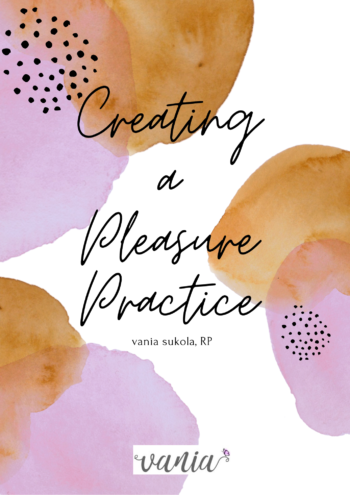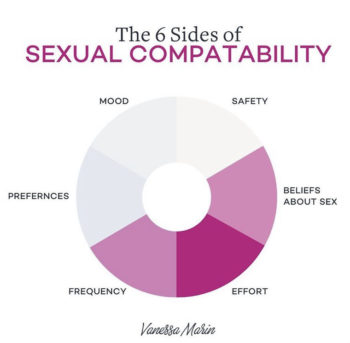It took me suffering in silence because I didn’t realize that I had a poison ivy infection for me to realize that I too, like my mom, don’t always speak up about things happening to me if it might be an inconvenience for someone else.
I was itchy and scratching for days, and when i noticed the tell-tale welts form on my legs, i kept them a secret. I kept this to myself because i thought the pain would go away on its own, and that i didn’t want to be a bother. I didn’t want to be a burden. It was then i realized i had started saying the same thing to myself about myself that my mom had said to me.
And this is not something i want to continue.
I reached this new place of understanding that venting or being able to talk to someone about my problems doesn’t mean I know how to fix them or even that fixing them is possible. It’s when I talk about my life that I’m showing up authentically and not abandoning my own self.
Gabor Mate shares about the importance of authenticity and attachment. I recently saw a clip where he spoke about the way that women die by not getting their needs met. He was talking about how when we keep our needs close and don’t share them, we’re not being authentic to ourselves. Even if it means that we may not be answered or get support, just by sharing what our needs are or what’s on our mind can also be very helpful.
My mom died by not getting her needs met. She had been mentioning having stomach aches and eventually knew that she needed to go to the hospital because this pain wasn’t normal. She died about 10 days later because her body shut down. She went in thinking she had a stomach ache and minimized the possible reasons for this pain. She never left that hospital and died of undiagnosed ovarian cancer.
I don’t want my mom’s death to be in vain nor do I want it to be her legacy. And so, being able to advocate for myself and listen to other people’s stories has become one way that I’m of service in this world. In honour of my mom and the life that was just out of her reach, I am also committing to live my life fully. Bringing pleasure in an embodied way is an even more healing way to repair my ancestral story.
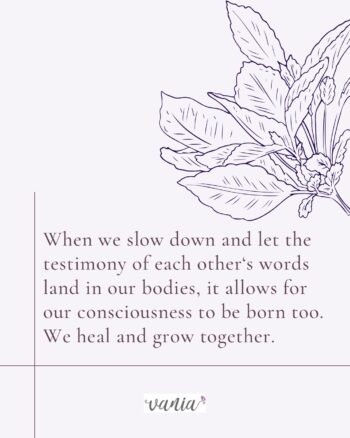
When we slow down, and really listen to each other, someone’s story or testimony can also be our medicine and healing. We are brought to tears when we hear someone else’s story. Not just because it resonates for us in our own life, but also because what they’re saying makes us feel so much love and care for them … and when we are the ones that are sharing and see tears in others eyes, what feels so delicious is that they are sending me love and holding space for me instead of just waiting for their turn.
So often the silence that we are giving someone is actually us just thinking about what we are going to say when it’s our turn. What about if we Listen fully with our heart? What if we see fully with our heart so that we can be transformed by someone’s story and not just have a listening turn for them.
Is therapy a bandaid solution to building a village? I don’t think so necessarily. There is attunement that happens when we hear each other, see each other, and are with each other with our full bodies. Even if it’s through a screen, it’s with our full presence.Healing can be processing buried memories and feelings through movement, having practices to help us better understand ourselves, learning how to nurture our self back together, repairing our childhood experience through the body, unpacking trauma that we experienced, finding meaning and clarity, new insights and understanding, and give ourselves new ways to help us let go of our inhibition.
This is also why I feel so honoured when people share their stories with me – “talk therapy” should not be so underestimated and pushed aside. It’s when we share our stories with each other that we feel connection: When we speak out loud the stories that we have been taught to be silent about, it changes the inner landscape of our being. Our needs, dreams, thoughts and feelings deserve to be heard and witnessed. We are weaving a new thread together, untangling a ball of thoughts and feelings, and creating something altogether new like a new tapestry or cosy blanket. Therapists serve as a guide to help weave the unfolding.
When we are moved by each other, this is part of this collective healing work that needs to happen: We are not just individuals in our own healing, but also healing together. I think this is a big part of why being in community, in circle, in a caring container is so necessary because when we are together, we heal together.
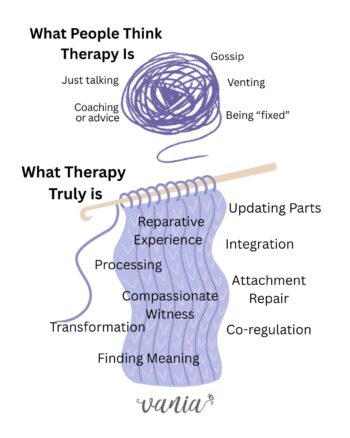
Talk is one way to connect and it can deepen healing. It is not surface level, especially when we get out of the loop that is stuck in our head. What we say is a spell and can transform. There is magic in our words. It is also a physiological change: sharing what is alive in our emotional body creates oxytocin to be released. This hormone is associated with love and connection and is the remedy against stress hormones like cortisol. This hormonal shift is what decreases stress because it regulates our nervous system. Our body is hardwired for connection, so we are social creatures like bees or wolves.
We also know that the vagus nerve is activated in the throat area, which is why humming, singing, or buzzing like a bee are self-soothing practices to alleviate stress. Talking then, so too serves a similar purpose. It is not just talking for the sake of it but also feeling held, seen and heard. This is what enhances co-regulation and an ultimate shift in our nervous systems and emotional regulation.
I’m kind of getting to a breaking point around how many people, especially other care practitioners who call themselves healers or somatic coaches give therapy a bad rap. I think they might have been speaking from their own wounds or negative experience surely because what happens in the sessions I offer for is more than the silent listener. Rather, it’s a deeply intuitive a tuned relational alchemy that brings in ceremony as much as it brings in cognitive reframing. Therapy is the guided unravelling of stuckness that transforms into something beautiful – our healed Self.
I am humbled to share that this Winter, i have been a therapist for twenty years, and the last 10 years has been in my thriving private practice. I always knew i wanted to be a therapist, it was my calling and also a role i get to practice at an early age.
Another form of transforming with words is poetry. As someone who has turned to poems as a comfort and support, writing them help me process feelings that feel stuck in me, with half sentences coming out in bursts. I recently wrote a poem that brought voice to my eldest story origin story. It was inspired by a certain pop sensation, who may have gotten some of the themes around the eldest daughter wrong. I am the eldest daughter of an eldest daughter and am really resonating with this archetype of the plight of the eldest daughter.
To Become the Eldest Daughter
To be the eldest daughter of the eldest daughter line
is a dance with fate.
Maybe I became a therapist because
it was always meant to be.
Maybe it was the early days of holding space for
my mom‘s secrets and stories, her pain and processing.
Perfection was the strongest protector.
It was in all the straight A’s
and pretty dresses, the ballet lessons,
and tiny doll sets.
It was knowing how to attune to
the slightest of shifts, whether it was
how a door was closed or the way
the kitchen spoon hit the floor.
To be the eldest daughter is to be given
this contract without ever being asked.
Taking time to sit with my inner child
and the teen I became let’s them know
I can take it from here.
I am a daughter and I am more than that.
I have a whole basket full of
my own wildest dreams.
To become the eldest daughter is to heal
and find my own place called home.
~ vania sukola
Thank-you for listening to my story.


